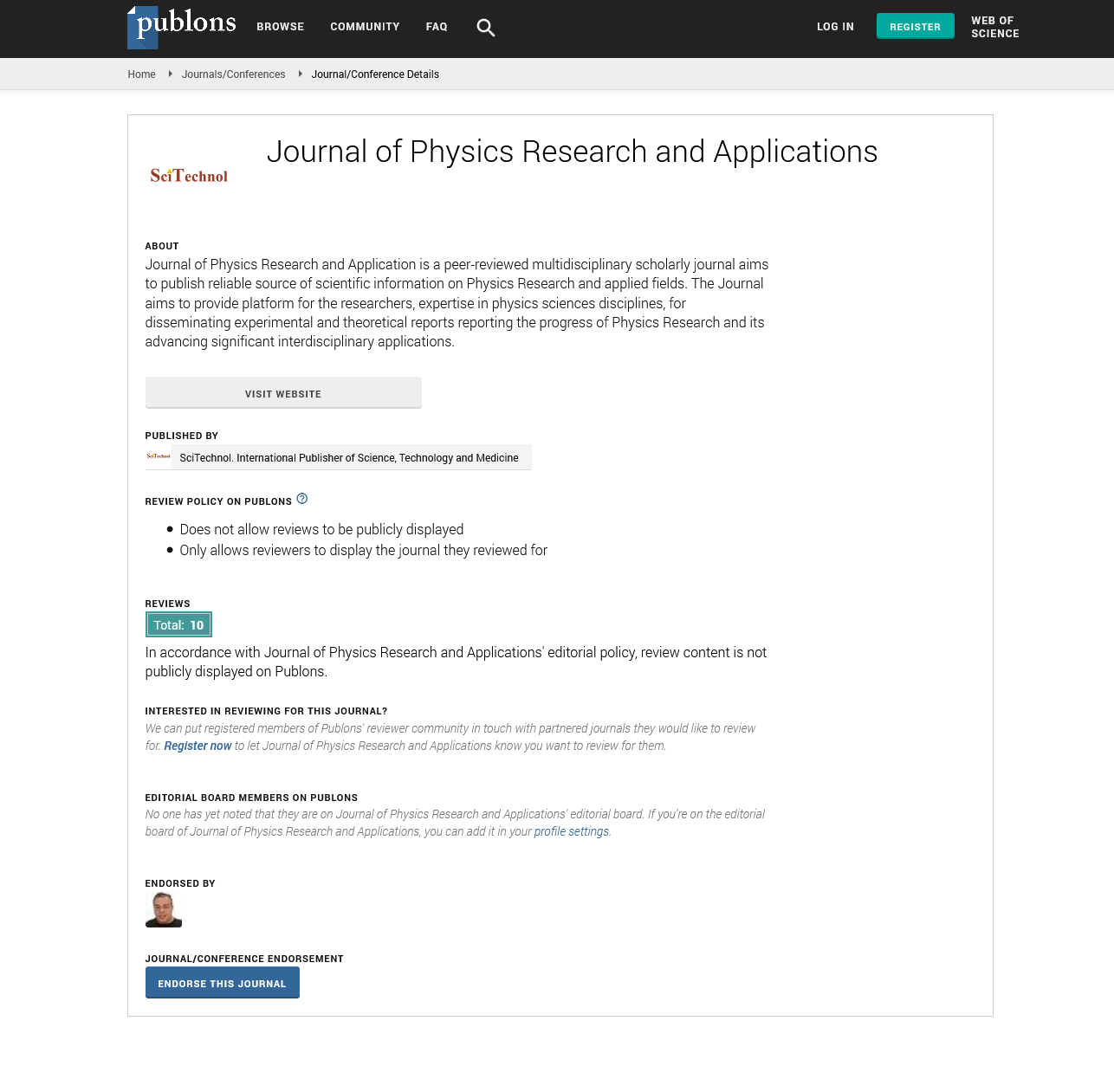Acquisition mass by strong interaction
V.G. Plekhanov
Fonoriton Sci. Lab, Estonia
: J Phys Res Appl
Abstract
The traditional direction of the search for new physics and the origin of mass beyond the bound of the Standard Model in high energy physics is associated with the development of more powerful accelerator [1]. A low – energy approach, for example, in the problem of the origin of mass, was followed by the author of the work [2]. The present report supplements work [1] with low – energy physics and at the same time is not only a logical continuation of work [2] but also its experimental proof. It is due to the isotopic features that not only the binding energy of a neutron with an electron of ≈ 105 meV and the maximum value of the strong interaction coupling constant αs = 2.4680 in the deuterium nucleus were found using classical spectroscopy of LiH and LiD crystals which differ only by one neutron [3], but also the isotopic mechanism of mass creation for massless fermions (leptons = electrons ) in graphene [3, 4]. It should be emphasized that the observed binding energy of a neutron with an electron is in conflict with the QCD theory, according to which the strong interaction does not affect on leptons (see, for example [5]). The isotopic transformation of graphene, a semimetal into semiconductor deserves special attention [3, 6, 7] with the opening Eg of massless fermions acquire mass. Estimates Eg in graphene give the following equality Eg = 2m [7]. When Eg = 1 eV [4] leptons acquire a mass equal 0.5 eV – this value is not large but finite. According to paper [8] the mechanism of acquire mass is the cannibalism of gluons – the particles become massive by eating each other.
Biography
Professor V.G. Plekhanov has graduated from Tartu State University (Estonia). He obtained Ph. D (physics and mathematics) as well as Doctor of Sci. (physics and mathematics) – both degrees from Tartu State University. He is author more than ten monographs in different field of physics and informatics. Main interest field: the origin of the mass as well as QCD.
 Spanish
Spanish  Chinese
Chinese  Russian
Russian  German
German  French
French  Japanese
Japanese  Portuguese
Portuguese  Hindi
Hindi 
